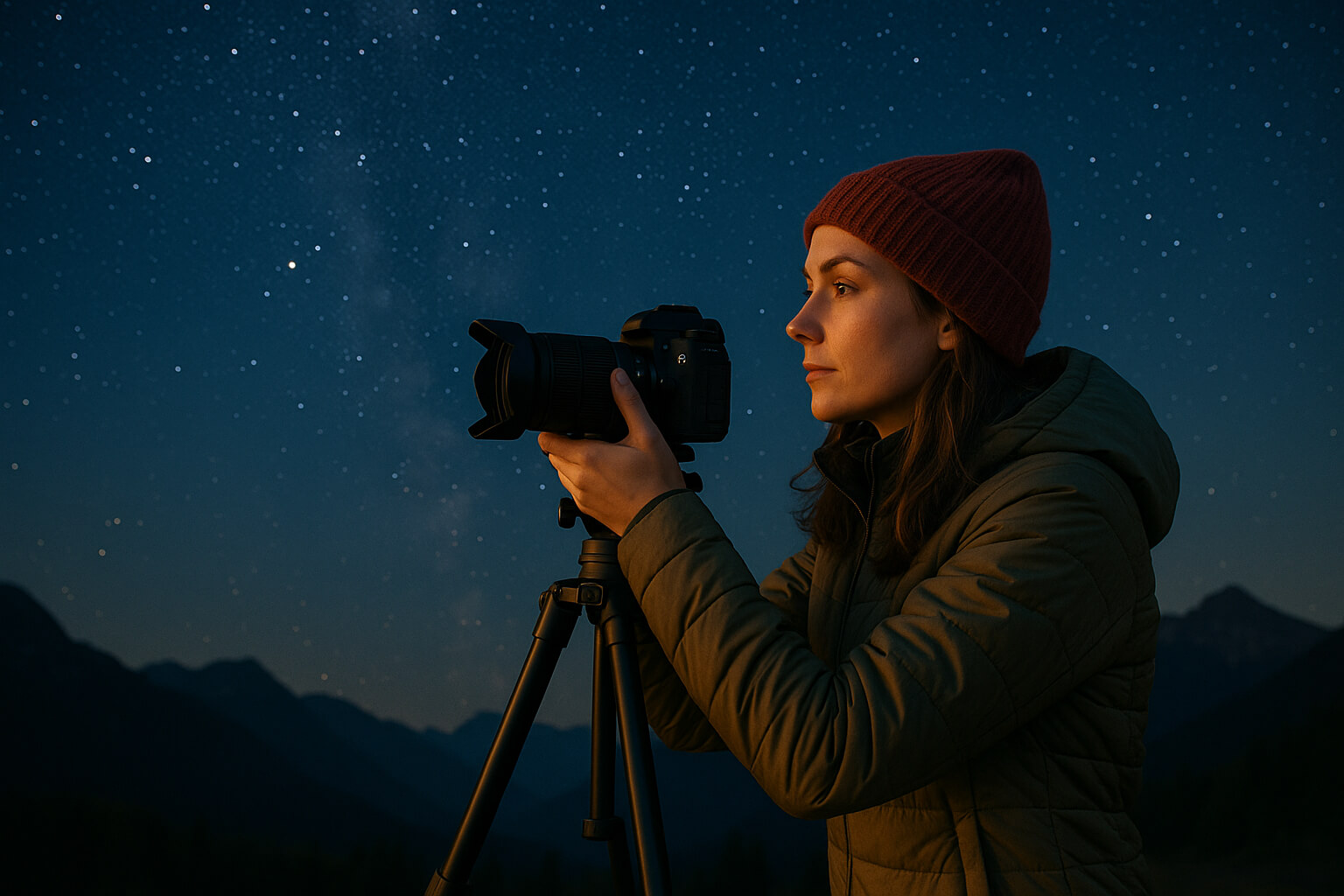Capturing the night sky—whether it's the stars, constellations, or the magical Milky Way—can be a deeply rewarding hobby. While many believe that you need a high-end DSLR or mirrorless system for great astrophotography, there are actually several budget-friendly options that can produce stunning results if used right.
Let’s dive into the best cheap cameras for night sky photography in 2025, what features matter most, and how you can make the most of them.
What Makes a Camera Good for Night Sky Photography?
To successfully shoot in low-light conditions, like the night sky, your camera needs a few non-negotiable capabilities:
1. Large Sensor Size
- A larger sensor means more surface area to capture light. This is critical in astrophotography where light is limited. APS-C sensors and Micro Four Thirds are great for beginners and hobbyists, offering a good balance between size, performance, and price.
- Why it matters: More light = less noise and better detail in dark scenes.
2. Low Noise at High ISO
- Stars are dim. Shooting them often requires ISO settings of 3200 to 6400 or higher. A good astrophotography camera will handle these high ISO levels while keeping digital noise to a minimum.
- Why it matters: Clean high ISO performance helps preserve stars, contrast, and dark tones without looking grainy.
3. Manual Controls
- You’ll need complete control over shutter speed, aperture, and ISO to shoot long exposures (10–30 seconds or more). Budget cameras that support full manual (M) mode are essential.
- ✅ Why it matters: Auto mode won't cut it when the subject is the night sky.
4. Lens Compatibility
- The ability to use fast (wide aperture) and wide-angle lenses is critical. Look for systems with access to lenses around f/2.8 or wider, and focal lengths between 14–35mm.
- Why it matters: The right lens helps capture more of the sky and draws in enough light.
- Related: The Best Camera Settings for Astrophotography
Top Budget Cameras for Night Sky Photography (2025 Picks)
Here are the top-rated entry-level cameras that deliver excellent performance without draining your wallet:
1. Canon EOS Rebel T7 / 2000D
- Sensor: 24.1MP APS-C CMOS
- ISO Range: 100–6400 (expandable to 12,800)
- Lens Mount: Canon EF/EF-S
- Strengths:
- Affordable and beginner-friendly
- Excellent RAW image quality
- Compatible with affordable prime lenses like the Canon EF 50mm f/1.8 STM
🧠 Why it’s great: Solid image quality, manual mode, and great lens support make this a classic beginner DSLR for shooting stars.
Buy on Amazon
2. Nikon D3500
- Sensor: 24.2MP APS-C CMOS
- ISO Range: 100–25,600
- Lens Mount: Nikon F
- Strengths:
- Long battery life (over 1500 shots per charge)
- Crisp, detailed JPEGs and RAW files
- Works well with budget lenses like Nikon 35mm f/1.8G DX
Why it’s great: Excellent value for long exposure shots, with clean high ISO results and intuitive controls.
Buy on Amazon
3. Sony Alpha a6000
- Sensor: 24.3MP APS-C CMOS
- ISO Range: 100–25,600
- Lens Mount: Sony E
- Strengths:
- Compact mirrorless body, perfect for travel
- Fast autofocus and custom control dials
- Pairs well with the Sigma 16mm f/1.4 or Sony 20mm f/2.8
Why it’s great: Excellent ISO range and detail capture in a small body—ideal for shooting the Milky Way from remote locations.
Buy on Amazon
4. Olympus OM-D E-M10 Mark III
- Sensor: 16MP Micro Four Thirds
- ISO Range: 200–25,600
- Lens Mount: Micro Four Thirds
- Strengths:
- 5-axis in-body stabilization
- "Live Composite" mode for real-time long exposure stacking
- Super lightweight—ideal for mountain or desert shoots
Why it’s great: While not as powerful in ISO as APS-C, its stability and specialized astrophotography tools are perfect for creative shots.
Buy on Amazon
5. Fujifilm X-T200
- Sensor: 24.2MP APS-C CMOS
- ISO Range: 200–12,800 (expandable to 51,200)
- Lens Mount: Fuji X-mount
- Strengths:
- Gorgeous low-light color rendering
- Vari-angle touchscreen for better framing
- Works great with Fujinon 16mm f/1.4 or f/2.8 lenses
Why it’s great: Combines image quality with artistic film-like colors, great for dreamy night landscapes.
Buy on Amazon
Essential Accessories for Night Sky Photography
To fully unlock your camera's potential, you’ll want to pair it with these tools:
- 🦿 Sturdy Tripod: Essential for keeping your camera stable during 10–30 sec exposures.
- Best Tripods for Travel and Studio Photography
- 📸 Remote Shutter Release or Intervalometer: Prevents shake when taking long exposures. Many budget DSLRs don’t support app triggers, so this is key.
- 🌌 Fast Wide-Angle Lens: An aperture of f/2.8 or wider allows more light. Look for 14mm to 35mm focal length lenses.
- 🔥 Lens Heater or Hand Warmers: Prevent condensation build-up on lenses during long cold sessions.
Related: Must-Have Camera Accessories for Every Photographer
Post-Processing for Stunning Results
Astrophotography isn’t just about what you capture—it’s also about how you process it.
- 🖌️ Shoot in RAW to preserve full dynamic range.
- 🪄 Stack images using software like DeepSkyStacker to reduce noise.
- 🎨 Color balance your shots for natural star tones and contrast.
Color Correction vs. Color Grading
Best Photo Editing Apps in 2025
Expand Your Astrophotography Skills
Level up with more niche photography techniques:
Build Your Astrophotography Portfolio
Once you’ve built a gallery of night sky photos, it’s time to share and grow:
Final Pro Tips for Night Sky Photography
- Use Manual Focus: Autofocus won’t work in pitch-black conditions. Use Live View + zoom-in to focus on
